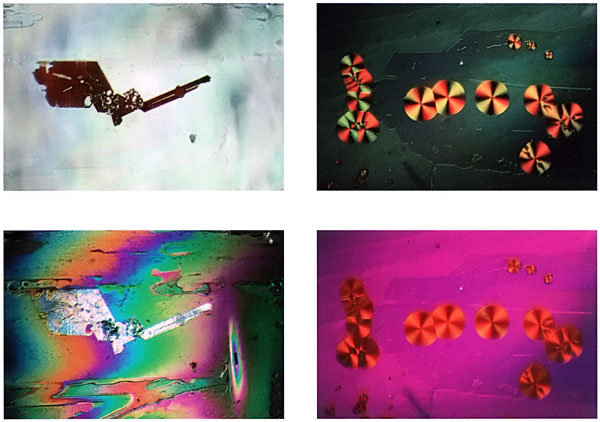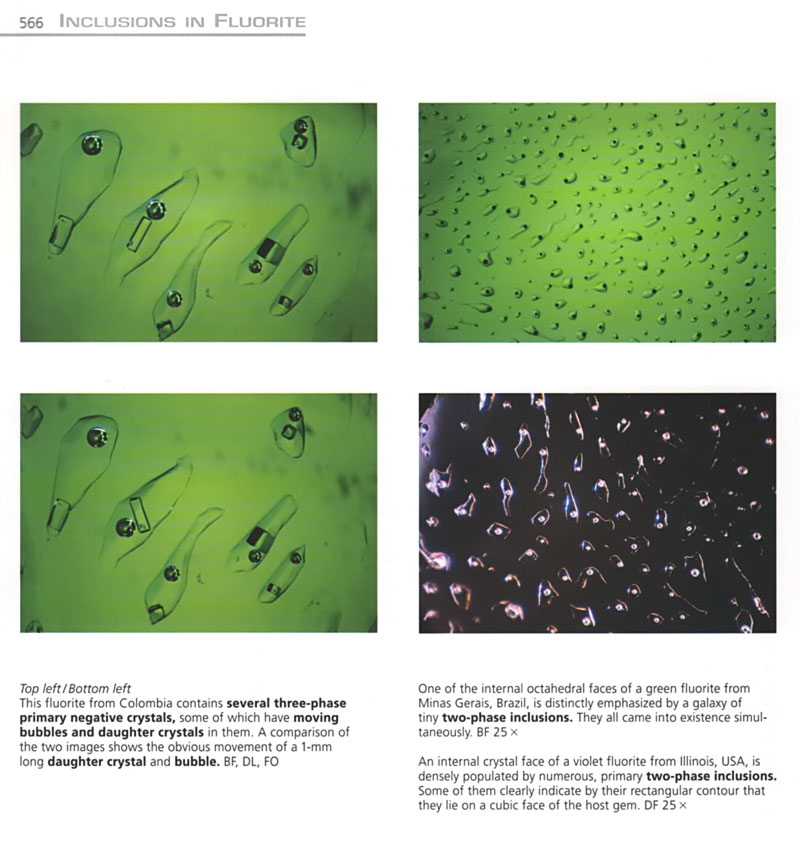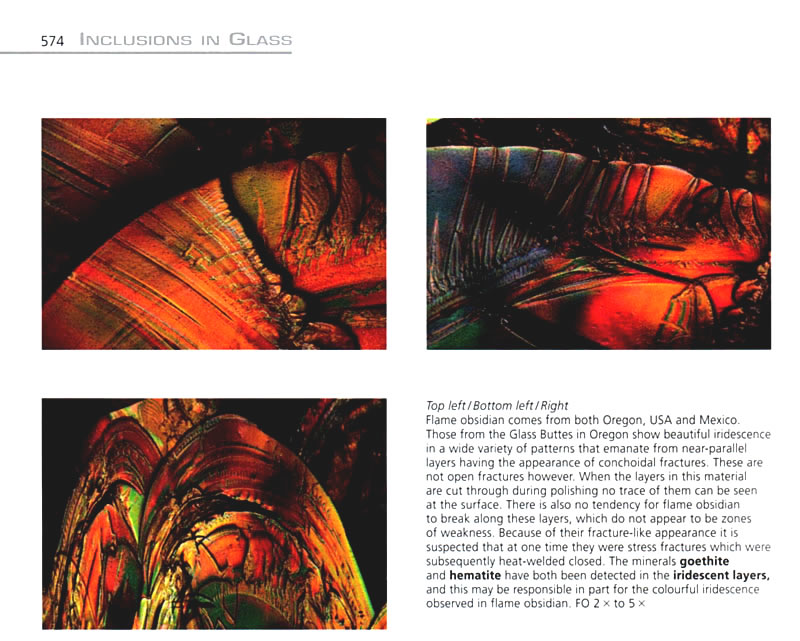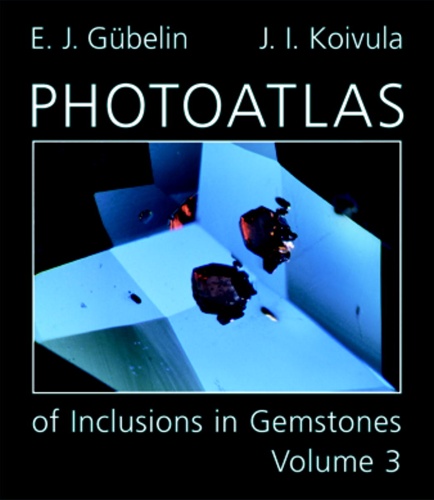Gübelin, Eduard J. & Koivula, John I. (2005) Photoatlas of Inclusions in Gemstones, Volume 3. Opinio Publishers, Basel, Switzerland, 672 pp. ISBN 3-03999-047-4
Grumblings
When the current volume was issued, I heard from some that the result was not up to the previous two and thus this reviewer entered the reading process with somewhat diminished expectations. Happily, I can report that the reports of the demise of quality were clearly exaggerated. While Volume 2 teased us with lesser gems, Volume 3 covers the A-listers that pass under our microscopes and over our trading tables every day. Diamond, emerald, ruby, and sapphire are all present and accounted for, and those with a love of the unusual will be pleased with the latter section, which contains coverage of enough quirky stars to satisfy any alt fan.
|
Tale of the Tape Opinio Publishers, Basel, Switzerland Chapter Contents
I. Introductory Section
II. Inclusions in Major Commercial Gems
III. Inclusions in Rare and Unusual Gems
IV. Inclusions in Gems of Commercial Importance
In Conclusion Glossary of Scientific Expressions Index About the Authors |
Introduction
While much of the current content was familiar to me, I was delighted by serendipitous discovery on many pages. The introduction was particularly sweet, beginning with the statement that "Nature is the ultimate expression of who we are, what we are, and where we came from", this verse interlaced with striking images that simply leave the mouth agog.
Inclusions in Major Commercial Gems
I think this section is where the gripes of readers accustomed to the typical Gübelin/Koivula light show might have their origin. By necessity, when discussing a single gem type (such as ruby or emerald), the color palette on each page is limited (emerald pages are mostly green; ruby pages are mostly red, etc.). While the Photoatlas volumes superficially masquerade as art tomes, at their heart we must remember they are reference texts. I'll have more to say about this at the review's end.
Synthetic and Treated Gems
One of the most important features of Photoatlas Volume 3 is the extensive coverage of synthetic and treated varieties of the major gems. This is invaluable for working gemologists and jewelers and makes Volume 3 truly a standout. Want to know the inclusions of Ramaura synthetic ruby? There are pages of examples (including some real stunners). How about treated diamonds or sapphires? Also present. From filled emeralds through beryllium-treated rubies and sapphires, the enhancement oyster is here in toto. Even the various forms of natural and man-made glass are well represented. I was also delighted to see each major section start with an essay and a solid bibliography. This is a welcome change from previous volumes, which tended to be light on references.
Photoatlas+
Other than the bindings (which have been too weak for the weight of the books), my one quibble with the Photoatlas series has always been this: they are coquettish teases that leave you wanting for more. Page after page of sexy strumpets strut their stuff across the paper, but the postage-stamp sized reproduction leaves both love and lust unrequited.
It is my thought that, as the remaining curator of this incredible body of work, John Koivula should assemble a minimalist volume that has no pretense to education, elucidation or any other readin', 'ritin' or 'rithmetic. Instead, what I'd love to see is a full-out, large-format art book, with images chosen solely for their drama and aesthetic beauty. Perhaps something along the lines of Steve McCurry's South Southeast (where each of the 70 plates is a full 15 x 11"), along with understated captions opposite that allow the reader to simply rejoice in the beauty of nature. After all, as the authors have stated: "Nature is the ultimate expression of who we are, what we are, and where we came from."
 Inclusions in Sapphires
Inclusions in Sapphires
Volume 3 of the Photoatlas contains an extensive section on the inclusions in sapphires.
 Inclusions in Sapphires
Inclusions in Sapphires
From the banal to the bizarre, the latest Photoatlas covers the entire gemological waterfront, as this scene from a heat-treated Montana sapphire shows.

 Inclusions in Fluorite
Inclusions in Fluorite
Volume 3 of the Photoatlas also covers the inclusions of less popular gems, such as fluorite.
 Inclusions in Obsidian
Inclusions in Obsidian
With these three volumes we have an extraordinary body of work, one that can stand alone on its aesthetic chops. Please, I beg of thee, let us savor this in large format. For in doing so, you will awaken more people to this wonderful field than any number of technical articles or scholarly tomes.
I've been told that the GIA originally passed on the chance to publish the original Photoatlas. A large art-book style Photoatlas+ would be relatively easy to put together. If retailed for less than $100 (South Southeast sells for $60), it could be a runaway best-seller (just imagine this gift as an option during the upcoming holiday season). With today's beleaguered economy, this is one golden goose I would hope the GIA would not let slip away.

Bias watch
I should mention that one of the authors (JK) is a close friend.

